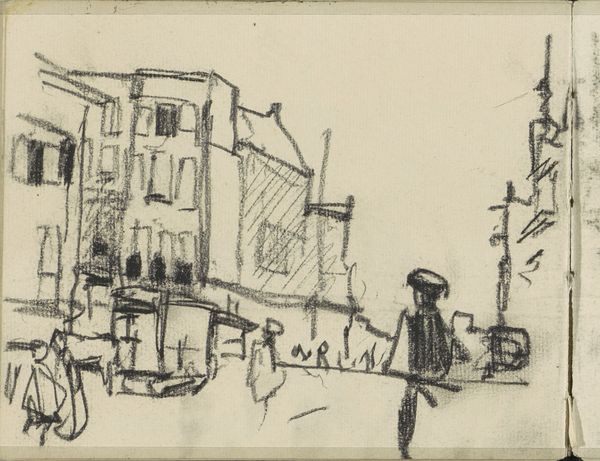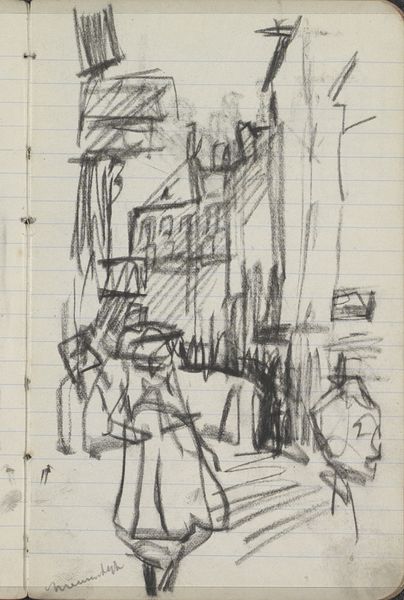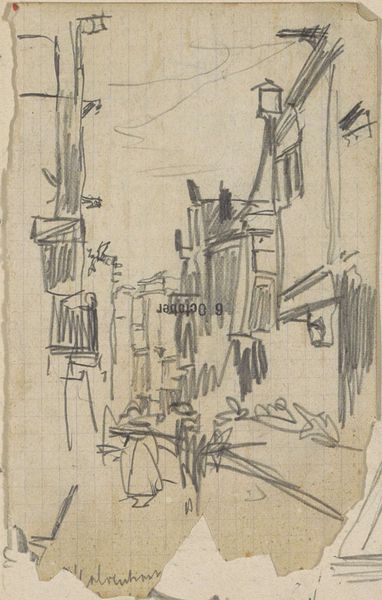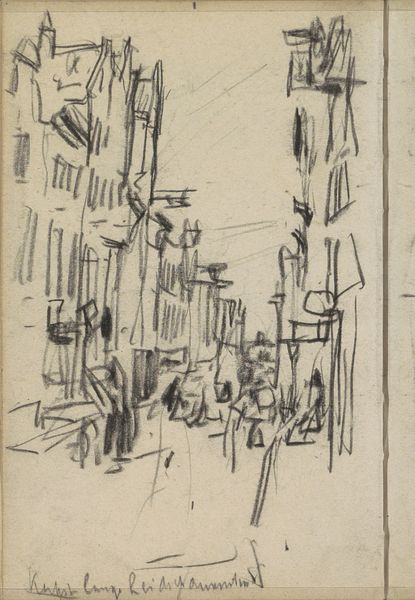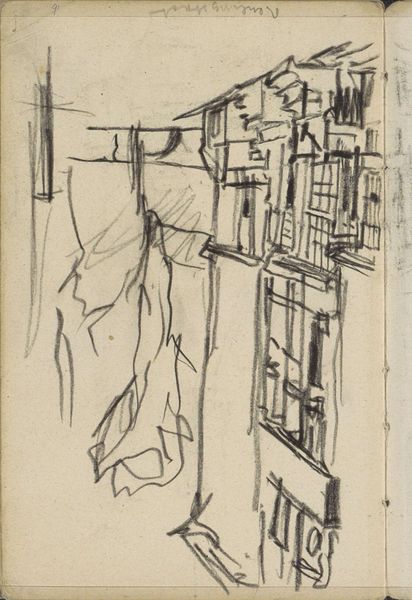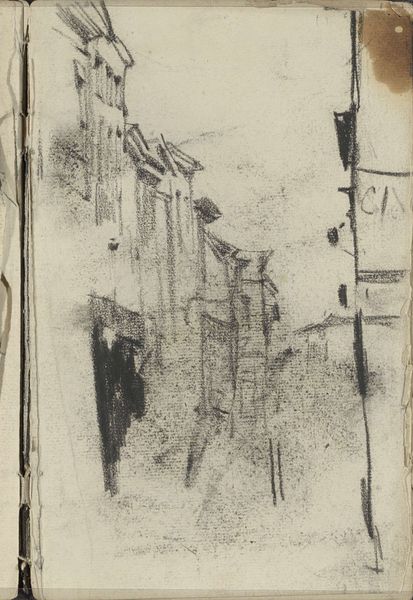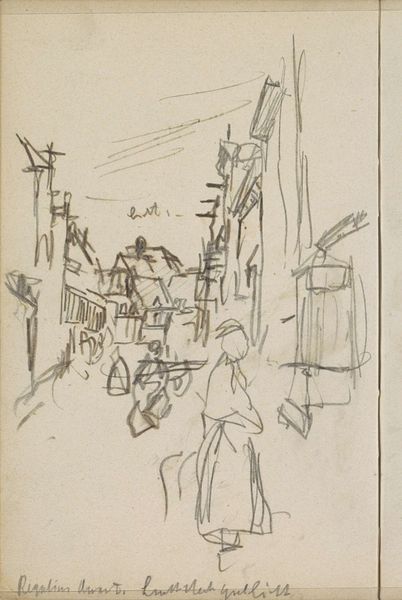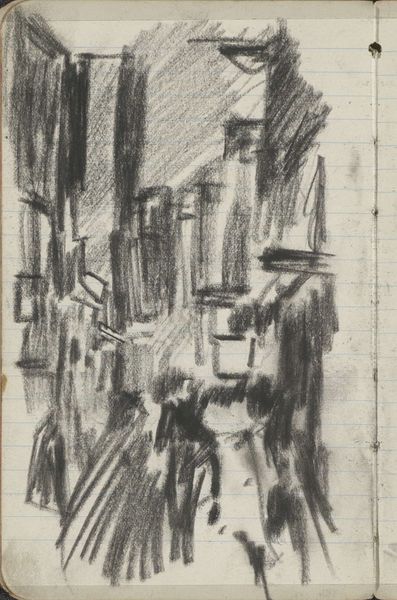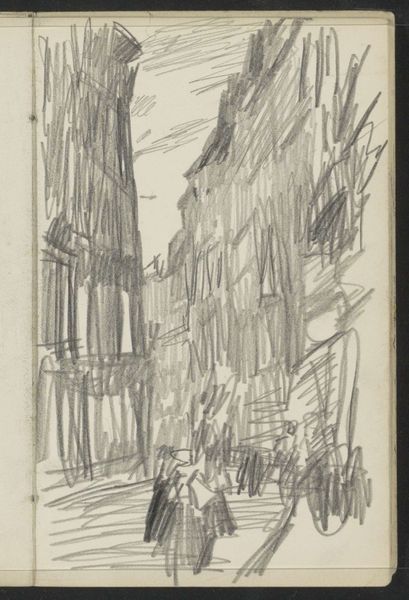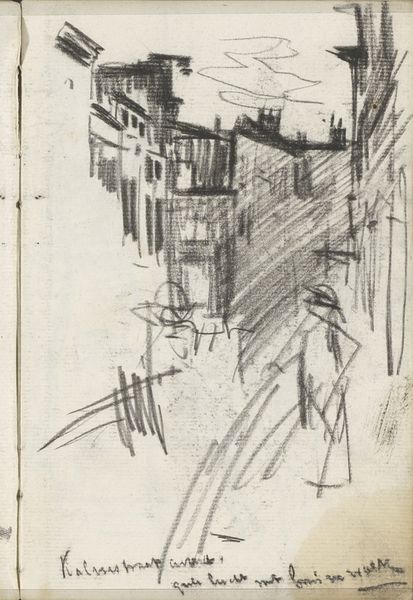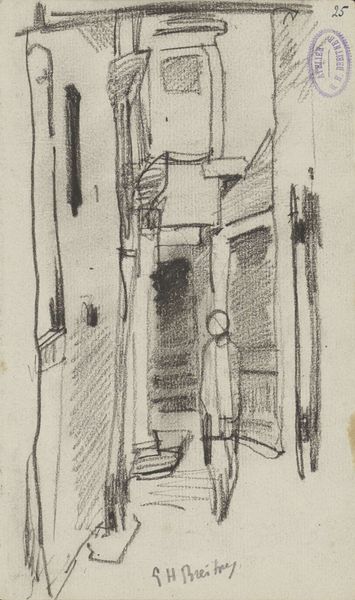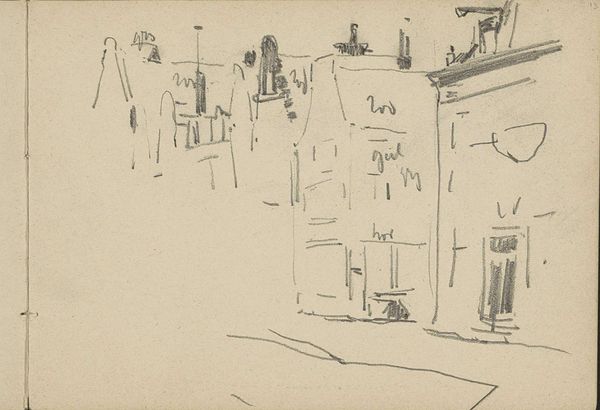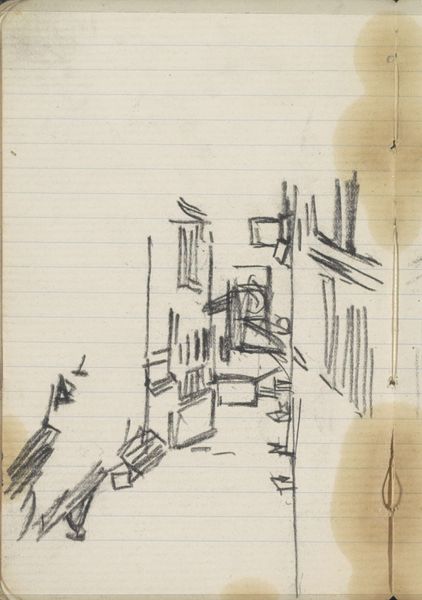
Copyright: Rijks Museum: Open Domain
Curator: This graphite and ink drawing is "Gezicht op de Kalverstraat te Amsterdam" – or "View of the Kalverstraat in Amsterdam" – sketched by George Hendrik Breitner sometime between 1892 and 1900. It's currently held at the Rijksmuseum. Editor: There's a beautiful tension between the sharp lines and the almost ephemeral quality of this quick sketch. The perspective pulls you right into the busy street, and it's compelling that such a common view of modern life at the time is reduced to this raw immediacy. Curator: Indeed, the immediacy is key. Breitner was fascinated by capturing fleeting moments, especially street scenes like this. He moved through the city documenting life, and this sketch likely acted as source material for paintings. It suggests he’s really after authentic representation. Editor: Yes, and the deliberate lack of detail underscores a kind of social reality. The faceless figures could be anyone; this emphasizes the uniformity of labor in industrialized urban centers. The repetition in the architecture suggests the alienation of living among these structures, too. Curator: Breitner does leave clues though. It appears this is the Kalverstraat, one of Amsterdam's most important commercial arteries, judging from the recognizable yet abstract shopfronts and signifiers sketched onto the page. The quick notation provides the viewer with something familiar in all that movement, too. Editor: Yet Breitner omits details and creates shadow in ways that also speaks to economic disparities of urban environments in Europe, especially at this time. Are we looking at industry from the privileged viewpoint, as detached observer? There’s so much more to be read than simply the impressionistic glance here. Curator: I think both are valid viewpoints! There's an engagement here, a conscious witnessing, even in its seemingly off-the-cuff style that feels characteristic of Breitner. What resonates most with me is this image acting as both a visual note and as a deeper signifier of time passing, holding multiple truths simultaneously. Editor: Ultimately, I read it as a powerful glimpse of a pivotal moment, a street rendered abstractly and carrying with it the burden of labor, social hierarchy, and early capitalist modernity. Breitner allows us access to that very layered reality through deceptively sparse symbolism.
Comments
No comments
Be the first to comment and join the conversation on the ultimate creative platform.
